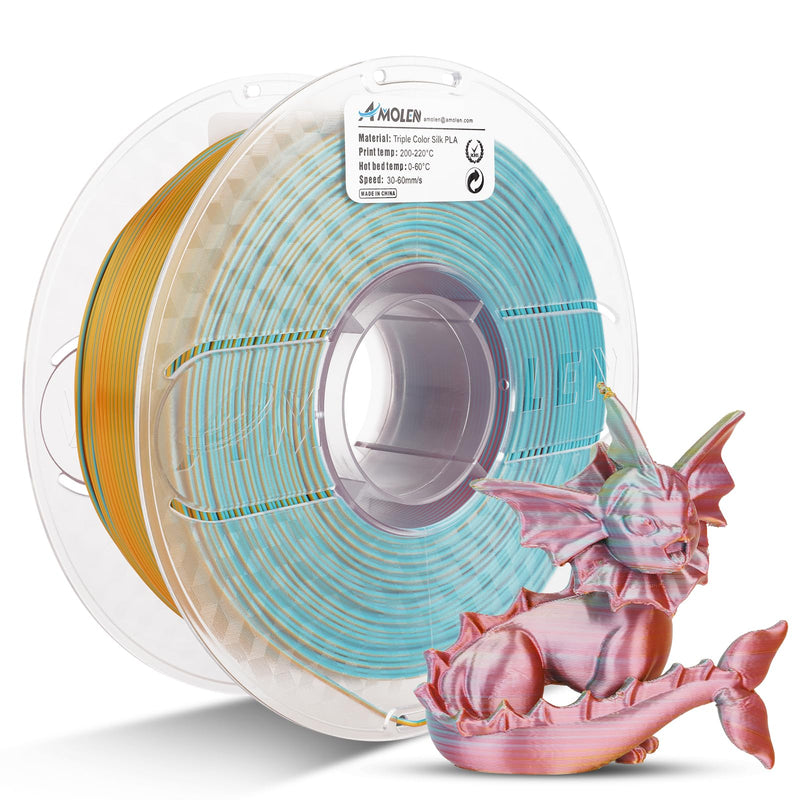Unlock the Secrets to Scoring Top-Rated 3D Printer Filaments Like a Pro!
Choosing the right 3D printer filament is crucial for achieving high-quality prints. The filament you select can significantly impact everything from the detail and finish of your projects to the durability of the final product. As the world of 3D printing continues to expand, so too does the variety of materials available, making it essential for enthusiasts and professionals alike to understand their options. This article aims to guide you through finding and purchasing the best-rated filaments, ensuring your 3D printing experience is both rewarding and successful. With the popularity of 3D printing on the rise, let's dive into how you can elevate your printing game by selecting the right materials for your needs.

Understanding 3D Printer Filaments
3D printer filaments are the materials used in the additive manufacturing process, essentially serving as the "ink" for 3D printers. These filaments come in various types, each with its unique characteristics suited to different applications. Common types include PLA (Polylactic Acid), known for its ease of use and eco-friendliness; ABS (Acrylonitrile Butadiene Styrene), favored for its strength and durability; and PETG (Polyethylene Terephthalate Glycol), which offers a good balance of flexibility and strength. Each type of filament has its specific melting temperature and printing requirements, making it vital to choose the right one for your project. For instance, if you are creating intricate models that require fine details, PLA might be your best bet due to its low warping and excellent layer adhesion. However, for functional parts that need to withstand heat or stress, ABS or PETG could be more appropriate.
Factors to Consider When Choosing Filament
When selecting filament, several key factors must be taken into account. Firstly, consider the material properties; different filaments have varying strengths, flexibilities, and heat resistances. Printability is another critical factor; some materials are easier to print than others, which can save you time and frustration. Compatibility with your specific printer model is also paramount, as not all printers support every type of filament. Moreover, think about the intended application of your print. Are you creating a functional part that must endure stress, or is it an aesthetic model meant for display? The choice of filament can greatly affect the outcome of your project, and investing in high-quality materials can lead to more consistent and reliable results. Personal experiences shared by friends highlight that discovering the right filament for their specific needs has often led to improved print quality and reduced print failures.
Where to Find Top-Rated 3D Printer Filaments
Finding the best-rated 3D printer filaments can be achieved through various sources. Online retailers are one of the most popular options, offering a vast selection of filaments with user reviews and ratings to guide your choices. Local shops may provide the benefit of hands-on experience, allowing you to see and feel the filament before making a purchase. Specialty stores that focus on 3D printing supplies often carry premium products and knowledgeable staff who can provide valuable insights. When evaluating customer reviews, look for consistent feedback regarding quality, consistency, and print performance. Engaging in community forums and social media groups can also lead you to trusted recommendations from fellow 3D printing enthusiasts who have tested various brands and materials.
Tips for Making the Best Purchase Decisions
To maximize your investment in 3D printer filaments, consider a few practical tips for making the best purchase decisions. Start by comparing options across different retailers to find the best deals. Look for warranties or satisfaction guarantees that can protect your investment and ensure you receive a quality product. Buying in bulk can often lead to significant savings, especially if you frequently engage in 3D printing. Additionally, do your homework by researching community recommendations and participating in forums where users share their experiences and insights. Personal anecdotes from friends who have had both successes and setbacks in filament purchases can shed light on what to avoid and what to embrace. By staying informed and considering these factors, you’ll be better equipped to choose the right filament for your next project.
Empowering Your 3D Printing Journey
In summary, choosing the right 3D printer filament is essential for achieving quality results in your printing endeavors. Understanding the different types of filaments and their properties, along with considering crucial factors when selecting materials, will empower you to make informed decisions. As you explore various sources for purchasing top-rated filaments, remember to leverage community knowledge and personal experiences to guide your choices. With the tips provided, you can enhance your 3D printing journey and create impressive projects that showcase the full potential of this exciting technology.







